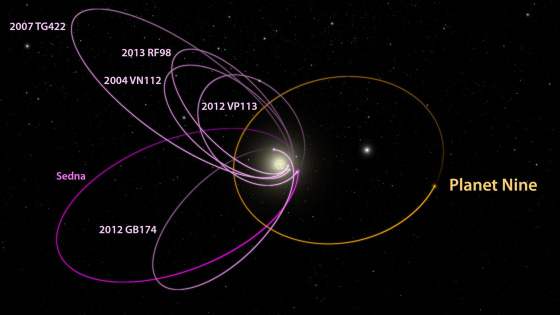A pair of serious professional astronomers, working at CalTech, believe there’s a big planet — a gas giant like the other planets beyond Mars — way out there somewhere. Their math says so.
Planetary objects have gravity. They pull on other objects in space. (Think moons.)
The existence of such a planet could explain an “unusual clustering of icy asteroids and cometary cores called Kuiper Belt objects,” a ring of small and mostly icy objects (such as comet cores) far out from the sun (details here) — including Pluto, originally considered the 9th planet, but now classified as a “dwarf planet” and plutino (definition here) — and their eccentric solar orbits (see diagram below).
Nobody’s seen it. Might not be there. Or maybe they’ve looked in the wrong place (as these astronomers argue).
Big as they think it is (but smaller than Neptune, which can only be seen with a telescope, and was found by mathematically predicting its location), it would be hard to see even with very large telescopes because it’s at least 13 times farther away from us than Neptune. If it exists at all.
If this makes your head spin, read article here.
Related story: Einstein’s theory that gravity bends light was proved over a century ago; now the Hubble Space Telescope has photographed the phenomenon. See story and photo here.
Comment: Astronomers have only light and radio waves to work with. It’s amazing how much they’ve figured out from that alone, using sophisticated analysis, complex math, and the laws of physics to determine what’s out there.
